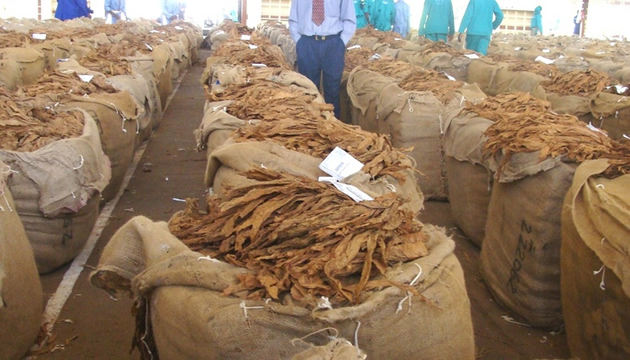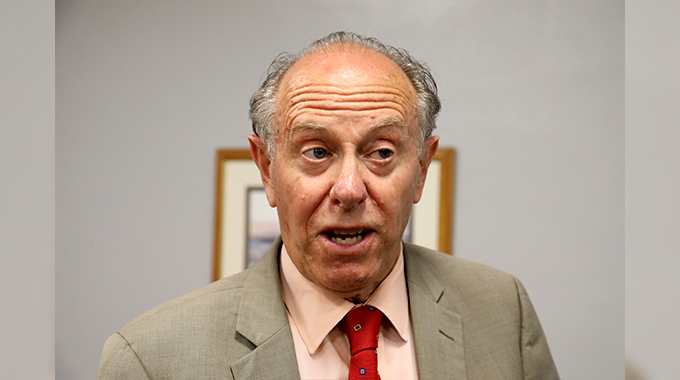ACHM: Leaders in land, water and wildlife restoration

Pamenus Tuso
ELEVEN years ago, Hwange communal lands, situated on a 20,000 acre piece of land near Victoria Falls, were characterised by sandy soils leached of all nutrients after decades of uninterrupted grazing and cultivation.
The bulk of the population in this area which stretches from Hwange National Park in south-west to Zambezi National Park in the north did not know the significance of wildlife, livestock and mankind in influencing the creation of a healthy eco system.
This was until the Africa Centre for Holistic Management (ACHM), a local and regional international non-profit making organisation, brought them the simple but efficient concept of making money from their environment while preserving that same environment.
ACHM was founded in 1992 by Allan Savory, a Zimbabwean–born ecologist, following a lengthy personal search for solutions to the land deterioration occurring in Africa and the human impoverishment that resulted from it. After founding the centre, Savory donated one of his farms to the locals for the purpose of furthering holistic management.
Other two A1 and A2 farms, Bosweden and Sekebelo, make up the ACHM which also houses the Dimbangombe College of Wildlife, Agriculture and Conservation Management.
The college is part of the Kavango Zambezi Transfrontier Conservation Area which is home to a sizeable wildlife population which includes elephants, lions and buffaloes.
Through a unique but simple planning methodology, the centre has become an epitome of land water and wildlife restoration using large livestock herds not only in Zimbabwe but across the globe.
“This methodology basically involves the combination of livestock into large herds. The herds then harness the power of their hooves to break up hard ground so that air and water can penetrate. The livestock also trample old grass so that the soil is covered and less prone to the drying effects of the sun and wind,” explained Huggins Matanga, the centre’s executive director.
The cattle’s dung and urine also help to enrich the soil.
This practice is guided by a strict grazing plan which is not only aimed at improving land health, but also to ensure that both livestock and wildlife have adequate forage all year round.
In the growing season, the livestock grazing is timed to ensure maximum plant growth and re-growth while in the dry season the plan rations out the forage until the next rains.
“Every year we anticipate droughts but we successfully plan for them. In all seasons, our livestock moves are well planned months ahead to avoid conflict with the needs of wildlife such as water and shelter,” said Matanga.
To keep predators such as lions and leopards at bay during the night, the centre has developed mobile lion proof kraals which protect the livestock.
The cattle stay in these boma sheeting made mobile enclosures on average about every seven days.
After seven days, the cattle are relocated by well trained herders to a new area where they will be used as another land restoring tool. Owners of the livestock are ACHM, ACHM staff and farmers within the Hwange communal lands who take advantage of the “grass bank” provided by the centre to farmers whose animals have run out of forage.
The only requirement for cattle’s admittance at the ranch from the local communities is that the cattle should arrive in good condition.
Livestock near starvation in the past have succumbed to deaths due to stress of moving in the vast ranch.
In 2010 the centre won the annual international Buckminster Fuller Challenge. The award which carries prize money of $100,000 recognises organisations which support the development and implementation of a strategy that has “significant potential to solve some humanity’s most pressing problems.”
In 2014 the organisation won the Humanitarian Water and Food Award (Denmark) as a “leading edge innovator in food security”.
ACHM is governed by a board of Trustees whose responsibility is to formulate policies for the organisation.
The board of Trustees which is responsible for fundraising activities comprise the five chiefs of Hwange district. The chiefs represent approximately 245,000 people in Hwange communal lands.
Desertification or land degradation has destroyed many communities globally.
In its recent report to the United Nations, the Inter-governmental Panel on Climate Change (IPCC) concluded that it is more than 90 percent likely that the accelerated warming of the past 50-60 years is due to human contribution.
Following the introduction of this concept, the lives of this community have drastically improved.
In Sianyanga village, the community had a problem of perennial water problems because their boreholes were drying up, land was degraded, there was no grass for livestock and crop yields were declining. The land had a hard cap at the surface and when it rained there was water run-off and the local Nalomwe River was silted.
The community had to take their livestock 15km away to Gwayi River where they camped for most of the dry season.
“We now plan our grazing and make sure our animals spend specific periods in paddocks before they are moved to another paddock. Unlike in the past where cattle travelled longer distances to get water, our animals are now healthier because they get enough water and grass,” said Balbina Nyoni, a communal farmer in Chief Nelukoba’s area.
As a result of this practice which has evidently improved soil aeration, water penetration and seed germination, Nyoni said most rivers in the area which ceased to flow long way back have started to flow again. Due to the success of holistic management in Hwange communal lands, ACHM centre is already working with communities and other local non-governmental organisations in the arid area of Chivi in Masvingo and Debshan ranch in the Midlands province to restore degraded pieces of land as well as increase crop yields.
“We’re planning to introduce holistic management in Chivi. Chivi is a very dry area with no animal forage and poor rainfall. We’re vigorously exploring this idea of villagers bringing together their livestock and use them to bring back lost biodiversity in the area,” said Rufaro Kafera, a programmes officer with Plan International.
Kafera said his organisation is already working with the Chivi community by empowering them on how to effectively manage the programme.
The centre’s holistic management model has also attracted admiration all over the world.
“ACHM centre’s model of holistic management is a good practical way of addressing issues of land degradation and water rehabilitation. I’m hoping to apply this principle to my little profitable land in the United Kingdom,” said Nighat Hasnain, a UK-based lands and water resources consultant.
Hasnain said she is also going to import the Zimbabwean holistic management principle to her native home in Pakistan where she said land degradation is a serious issue.
Hasnain was part of a team of over 70 scientists from throughout the world who recently visited the centre to study its activities. Since its inception, the centre has also been reaching many more communal farmers indirectly through its Holistic Land and Livestock Management Community Facilitator Training programme.
Under this project, close to 100 facilitators from organisations within Zimbabwe, Botswana, Zambia, South Africa, Namibia, Madagascar, Burkina Faso, Niger and Somalia have been trained.










Comments